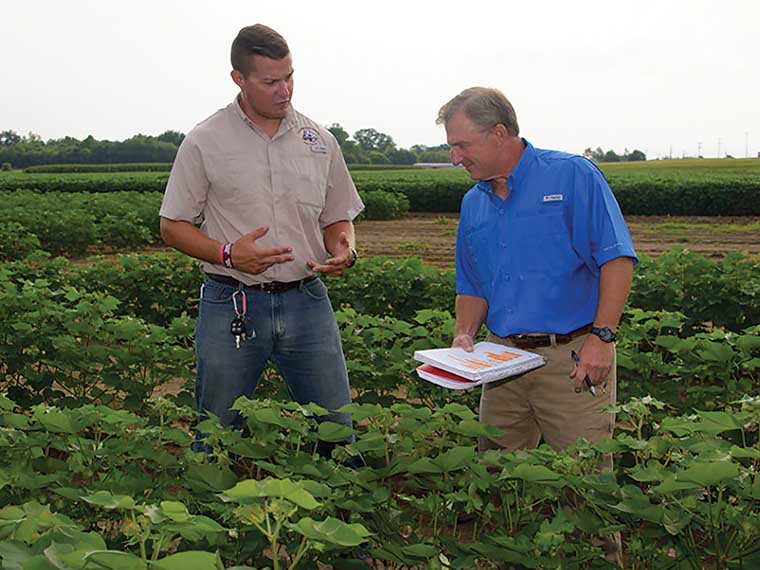The information presented on this page may be dated. It may refer to situations which have changed or people who are no longer affiliated with the university. It is archived as part of Mississippi State University's history.
Farmers grow the commodities that feed, clothe, and provide shelter for a burgeoning population. That's no easy task, especially since the world population is expected to reach 9.6 billion by 2050. The presence of herbicide-resistant weeds in row-crops only expounds that challenge. That is why agricultural companies have developed new crop and herbicide technologies to combat weeds. These products, which include the use of 2,4-D or Dicamba, known as auxin herbicides, are set to hit the market sometime soon.
One MSU weed science graduate student studies how these technologies can impact susceptible cotton crops. John T. Buol is evaluating cotton's susceptibility to auxin herbicide injury. The work is funded by Cotton Incorporated and Monsanto Company.
When 2,4-D and Dicamba are used by producers, there will be a risk of tank contamination and herbicide drift. These events will result in damage to crops. Previous research identifies a varying degree of susceptibility in non-traited cotton based on growth stage at the time of exposure. Buol is trying to determine which of these stages is the most susceptible.
"The general finding has been younger cotton, around the pinhead square growth stage, appears to be most susceptible to sustaining injury or yield effects from these low concentrations of auxin herbicides," Buol said. "However, there is a disparity between 2,4-D and Dicamba in when they each affect cotton the most."
Buol's research revealed that 2,4-D affected cotton more severely early on in growth and development. Dicamba impacted the crop during the middle of its growth and development. When the effects were severe, 2,4-D caused bolls to develop on vegetative branches while Dicamba caused boll growth on plants with aborted terminals.
Buol's work is directed by weed science professor Dr. Dan Reynolds, holder of the College of Agriculture and Life Sciences' Edgar E. and Winifred B. Hartwig Endowed Chair in Soybean Agronomy. Dr. Bob Nichols from Cotton, Inc.; Dr. Anthony Mills from Monsanto; MSU professors, Dr. Darrin Dodds and Dr. Jason Bond; and Dr. Johnnie Jenkins from the U.S. Department of Agriculture also advise Buol on the research.
"Once these technologies are approved, MSU professors like Dr. Reynolds will be fielding calls about injury. Our goal is to have those researched answers ready to extend to Mississippi producers," Buol said.
The study will be repeated during the 2016 growing season, when researchers will also quantify the effect of auxin herbicides on fiber quality.
This project was funded by Cotton Inc. through the Check-off dollar program and Monsanto Company through the Will D. Carpenter Distingushed Field Scientists Graduate Assistantship.

